White Mealybugs on Plants: How to Eliminate Cottony Mealybugs
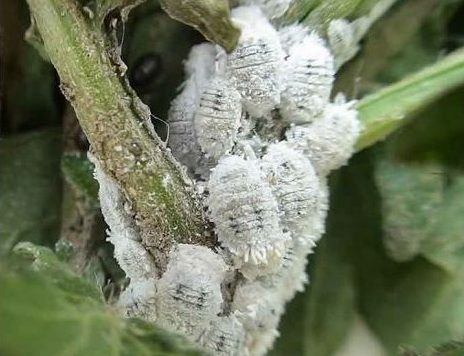
Today we will talk about one of the most common pests of horticultural and fruit trees: the cottony cochineal , cotonet or «mealybug» . As we will see, there are several types of mealybugs of different shapes and sizes, but today we will focus on those peculiar little white bugs , with the appearance of pieces of cotton.

We will see what is the cottony mealybug , what are the damages of this pest, and the best insecticides for mealybugs and ecological remedies that prevent and help eliminate the cottony mealybug on plants .
What is the cottony mealybug
There are several types of mealybugs . In the first place, it is possible to distinguish between those known as «ball bugs» or scale insects , which are crustaceans, and cocoids or scale insects , those bugs that remain attached to the stems and fruits of plants, which are homoptera (in the case of the cottony mealybug, of the pseudococcid family). We will talk about the latter today.
There are thousands of species of mealybugs or scale insects , of different shapes and colors, but today we will focus on one of the most common types of pests in the garden: the cottony mealybug or white mealybug . (There are also other coccoids that are quite common, such as the corrugated mealybug , which is also white in color, or the waxy mealybug , but we will leave these pests for another blog article).
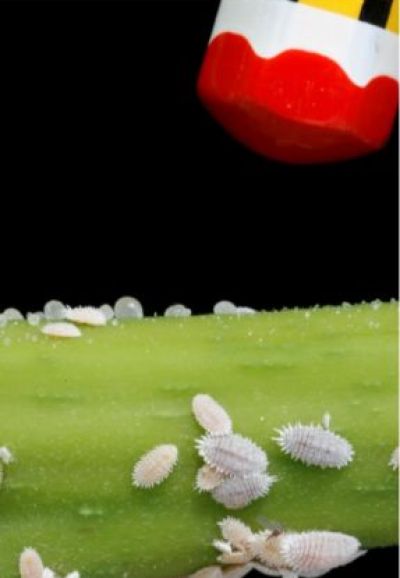
The mealy bugs are insects that move very little and have a body covered by a kind of white powder or wool protects them, so they are easy enough to recognize despite its small size.
As you can see in the photos, where you can compare their size to the thickness of a pencil, these white critters are very small , barely measuring about 3 millimeters.
The mealybugs that become pests of crops are females, since males (different in appearance and with wings) do not feed during their adult life and live for a very short time, only until they mate with a female.
After laying, in which a single female can lay hundreds of eggs, female mealybugs move on their little legs until they find a good place to settle. It is in that place where they will remain sucking the sap of the plant practically the rest of their life (from 1 to 2 months). Before dying, they will mate with a male and the cycle will begin again.
What plants does the cottony mealybug attack?
The mealybug infestation can affect both indoor and outdoor plants. This pest is very common in citrus fruits such as lemon or orange trees, so be careful if you have these fruit trees in your garden because they could harbor mealybugs that can spread to other plants in the garden. Mealybugs may also appear in other fruit trees such as apple, banana, pomegranate, fig or vineyard.
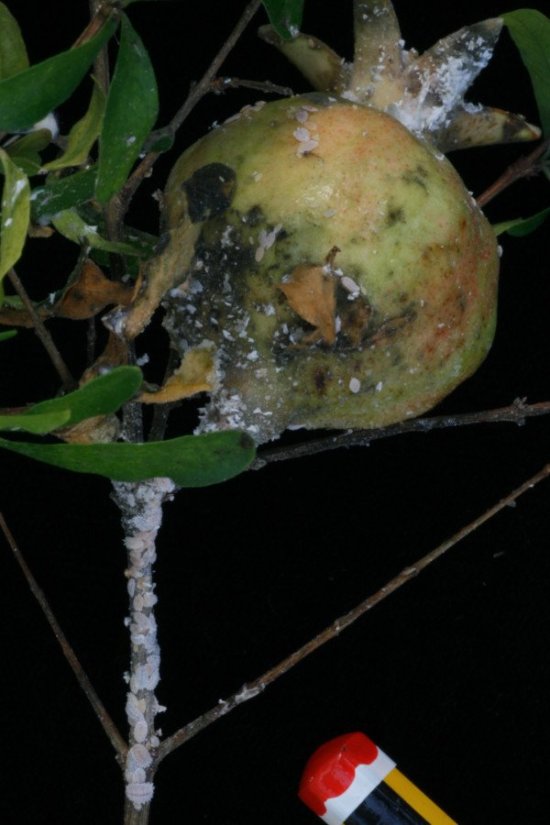
Also be careful if you have a small garden, because mealybugs are very common in ornamental plants such as cacti, palm trees, conifers and also in some flowering plants such as rose bushes, geraniums or oleander.
Within the garden plants, mealybugs mainly affect cucurbits such as cucumber or melon and nightshades such as aubergine , pepper and tomato . It is also very common in some aromatics such as rosemary .
Symptoms and Damage of mealybugs on plants
The main damage of mealybugs is that, when they stick their biting-sucking mouthparts and absorb the sap, they weaken the plants , and if the attack is serious and continued over time, they may even lose the leaves and fruits, which are they will fade and fall to the ground.
In addition, the substance secreted by mealybugs (molasses) can attract other pests such as ants , and is also the perfect breeding ground for the appearance of one of the most dangerous fungi in the garden, the bold . The bold is a fungus whose symptom is a black or grayish dust that covers the leaves and that will prevent the plants from correctly performing photosynthesis, and can die in not too long a time.
How to combat the cottony mealybug
Here are some ways to prevent mealybugs in the orchard and garden (because prevention is always better than cure …) and some of the best ecological treatments for mealybugs , such as home remedies, insect traps or biological control .
l more effective ecological ones to eliminate a cottony mealybug infestation if we already have it on our plants.
Prevent the appearance of mealybugs in the garden
As we always say, the most important thing for integrated pest control is prevention. We must be forewarned and monitor crops often to prevent harmful insects from multiplying and becoming pests. If you find mealybugs in your crops, try to remove them manually with a cotton swab or alcohol soaked cloth before it’s too late.
Also, here are some ways to prevent mealybug :
- Keep away and control ants , as they can often carry mealybugs. In addition, the honeydew or sweet and sticky substance secreted by the mealybugs (clearly seen in the second photo above) also attracts ants, so if we see them in the garden we must be vigilant.
- Avoid excess humidity . Through, for example, the use of localized irrigation that does not wet the aerial part of the plants or by pruning to promote aeration in the most leafy crops.
- Keep hedges and flowers in the garden that attract or harbor beneficial insects (such as natural enemies that we will see later).
- Placing mealybug-specific sexual confusion pheromone traps or capsules that attract and capture them before they colonize the plants.
- Place yellow chromatic traps , where the male mealybugs will stick together and thus prevent them from mating with the females and giving rise to another generation.
How to eliminate the cottony mealybug with ecological remedies
The biological control or what is the same, the use of natural enemies of pests , is one of the best methods to remove the cochineal plants. These insects feed on mealybugs or parasitize them, thus helping us to eliminate the pest. Some of the natural enemies of the whitefly are:
- Trichogramma wasp : its larvae feed on cottony mealybugs (and also aphids, another common pest in the garden).
- Cryptolaemus ladybug : as we have already seen in other Agrohuerto articles, ladybugs are one of the most desirable beneficial insects in the garden, since these insects feed on common pests such as aphids or mealybugs. It can be a very good idea to catch a few and build a shelter for beneficial insects .
- Leptomastix dactilopii and Anagyrus pseudococci : they are parasitoid wasps that lay their eggs inside the mealybugs and, when they hatch, the larvae kill the plague because they feed on them and grow inside them.
- Cryptolaemus montrouzieri – This friendly beetle is one of the most effective predators or natural enemies in eliminating the cottony mealybug pest from plants.
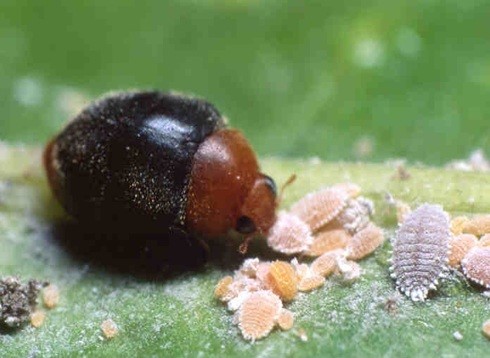
Also the frogs and toads in the garden are good predators of the mealybug, so if you have a pond nearby, do not hesitate to take advantage of this utility.
Another way to eliminate mealybugs is by applying natural or ecological insecticides . The natural remedies for mealybugs that we can apply on plants are:
- Neem tree oil
- Paraffin oils and other mineral oils, such as the well-known «summer oil». (Caution: it can be applied as long as the temperature does not exceed 30ºC and sulfur has not been used to control other pests in the last 40 days).
- Potash Soap
- Diatomaceous earth or powder
These are just a few of the treatments for mealybug. If you know other tricks or natural remedies to eliminate mealybugs from plants in an ecological way or have experiences or anecdotes about this pest, do not hesitate to share it with everyone in the comment thread below, where you can leave your photos and comments about the treatments for cottony mealybug .

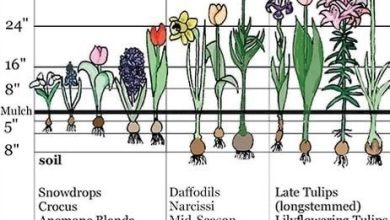

![Photo of Plant Parts: [Root, Stem, Leaves, Flowers and Fruits]](https://www.complete-gardening.com/wp-content/uploads/2022/08/plant-parts-root-stem-leaves-flowers-and-fruits-390x220.jpg)
![Photo of Sowing Cabbage: [Growing, Care, Irrigation, Substrate and Pests]](https://www.complete-gardening.com/wp-content/uploads/2022/08/sowing-cabbage-growing-care-irrigation-substrate-and-pests-390x220.jpg)